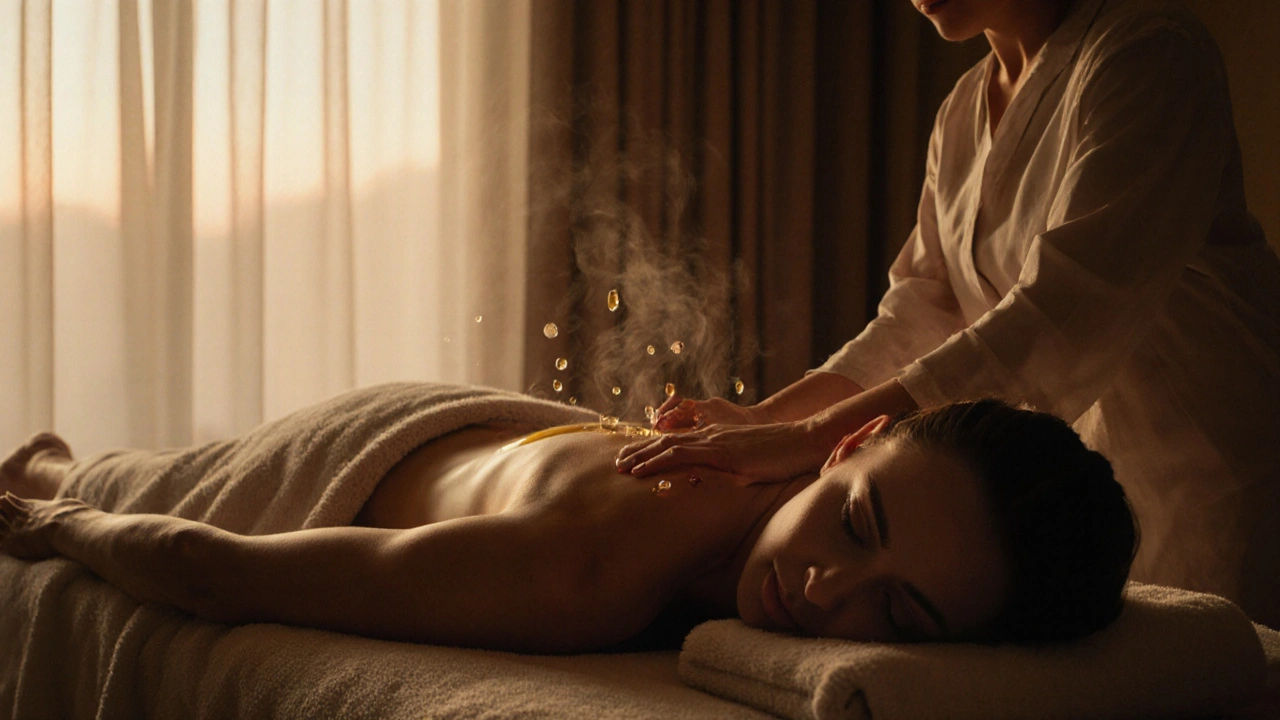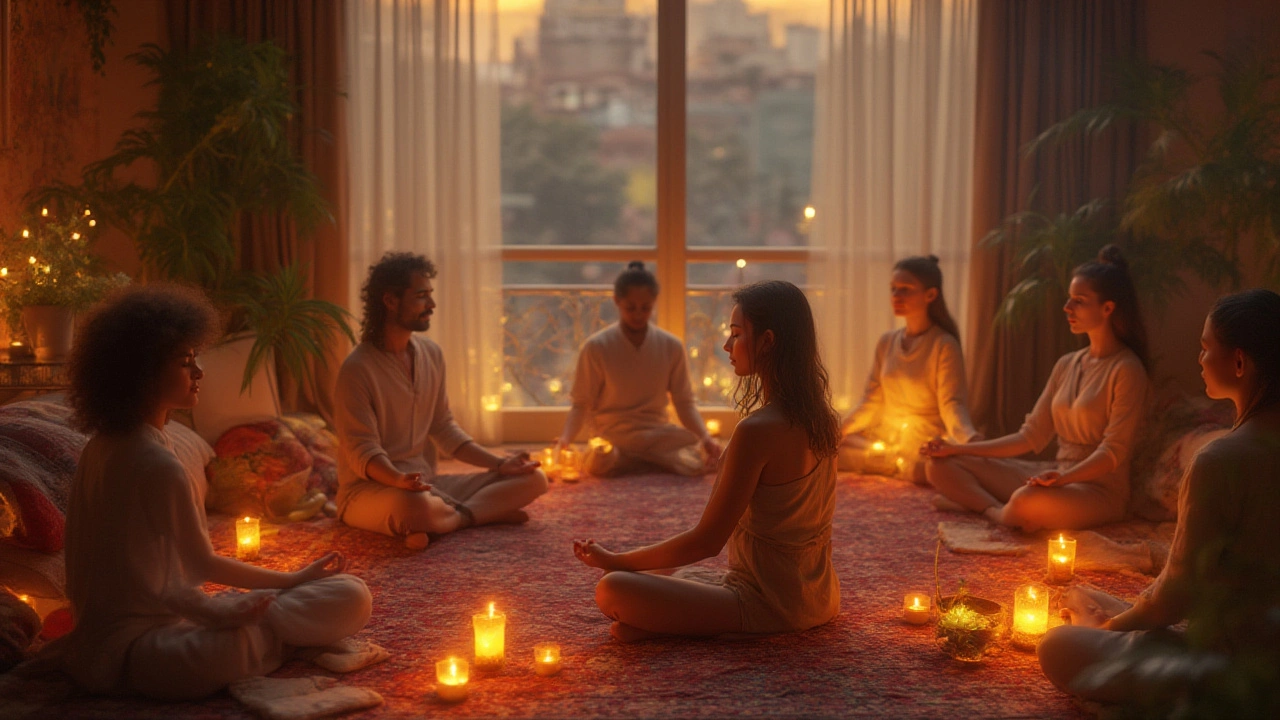Ever had one of those days where your mind just won’t stop spinning? The world piles on work, news flashes, family chaos—bam, your brain feels like a computer with too many tabs open. Someone once told me, 'Your body keeps the score,' and wow, it’s true. Stress doesn’t just sit in your head. It leaks into your shoulders, jaw, and even your sleep. The cure isn't always a bubble bath or sneaky chocolate stash (though never say no to chocolate). Sometimes, what you actually need is a body massage—a hands-on reset button for your body and mind. You probably know a massage feels good, but did you realize it’s also a legit tool for mental fitness? Not just a spa-day treat, but something scientists rave about for fighting anxiety, easing depression, and genuinely helping you cope with modern life.
What Is Body Massage and Why Does It Matter?
You hear the words ‘body massage’ and probably picture a fancy table, soft music, and someone kneading your shoulders, right? Technically, body massage is much more than pampering. It’s the hands-on manipulation of muscles, connective tissues, tendons, and even skin—using different pressures, motions, and techniques. The idea goes way back. Ancient Egyptians, Greeks, and Chinese health practitioners all believed massage could heal the mind as much as the body. Fast forward to now, and therapists blend science with tradition. The main goal: hit the ‘reset’ on your nervous system, boost circulation, and unravel knots from life’s daily grind.
So, why does this matter? Because your mind and body are tangled up in a team sport. When your body is tense, the worry in your head can ramp up. When you’re stressed, your body reacts—stiff muscles, headaches, even stomachaches related to anxiety. Massage is that gentle reboot button that tells your nervous system, ‘Hey, it’s safe. You can relax now.’ This isn’t just feel-good talk. Harvard researchers report that regular massage can decrease stress hormones (like cortisol), reduce blood pressure, and raise those “happy brain” chemicals—serotonin and dopamine. One study published in the Journal of Alternative and Complementary Medicine even showed anxiety levels drop by 50% after just a few deep-tissue sessions.
What’s even cooler is how massage fits into modern mental health care. It’s not about replacing therapy or meditation, but about adding another tool to your stress-busting kit. You get to quiet your mind by calming your body. Why ignore a strategy that’s been used for thousands of years and backed by today’s data?
How a Body Massage Boosts Mental Health—Facts, Real Stories, and Pro Tips
Getting a body massage isn’t just about muscle relief. It goes way deeper—the kind of deep that shifts your whole mood. Scientists break it down into actual, measurable changes inside your body. When skilled hands target tight spots, your nerves send a signal up to your brain: “Breathe out.” Literally, your heart slows down, your oxygen intake gets better, and your muscles let go. You might even feel yourself drifting off, ready for a little nap right there on the table.
If you want hard numbers, here’s the good stuff: A 2010 study found that weekly Swedish massages reduced depression and improved sleep for people with anxiety. Even a simple 30-minute chair massage at work can boost focus and drop stress levels, according to Columbia University Medical Center. Heart rate variability—a measure of your ability to deal with stress—improves after just a few sessions. They actually tested this with office workers who got mid-day massages vs. those who didn’t, and you can guess who faced fewer meltdowns in the afternoons.
| Benefit | Massage Impact |
|---|---|
| Lower Stress | Up to 30% drop in cortisol |
| Elevated Mood | Raised serotonin/dopamine by 25% |
| Reduced Anxiety | 50% decrease with regular sessions |
| Better Sleep | Increased deep-sleep cycles |
Beyond the data, there’s the real-life side. After a tough day chasing my daughter Poppy or digging through my inbox, all I want is for my shoulders to come back down from my ears. My husband Gavin swears by the “20-minute head, neck, and shoulder” routine—so simple, but it melts the crankiness away and puts everyone in a better mood. Some folks use massage as their personal safe space—a rare hour where you can shut the door, tune out notifications, and just 'be.'
Here’s a tip from therapists: If chronic worry is your thing, schedule a monthly massage. Your brain learns to expect periods of calm, and this anticipation alone can dial down low-level anxiety. Another trick? Mindful breathing during your session. Sync your breath with the massage strokes, and you’ll double up on the mellow vibes. Want quick relief at home? Try self-massage—a tennis ball on a tight spot, guided by a YouTube video, often does the trick when you’re short on time or saving pennies.
Types of Body Massage for Mental Wellness—What Are Your Options?
There isn’t a one-size-fits-all solution. Different massage styles tick different boxes in your mental health toolkit. Here’s a snapshot of some crowd favorites you’ll find in most cities:
- Swedish Massage: Think slow, gentle, full-body strokes. Great for beginners and stress relief. Therapists use oil or lotion for that classic spa vibe.
- Deep Tissue Massage: More pressure, but targets deep muscle knots. Fab for chronic tension and feeling like you’ve carried your toddler, groceries, and emotions all at once.
- Shiatsu: Japanese technique using thumb/finger pressure along energy lines, totally clothes-on. Helps with anxiety and balancing energy if you’re feeling ‘off.’
- Thai Massage: Part massage, part yoga. You stay clothed, and the therapist stretches your body, which can boost mood and flexibility in one session.
- Hot Stone Massage: Heated stones warm up tight muscles and work wonders if you’re just too tense for hands-on kneading right away.
In some places, you’ll find extra options—aromatherapy (using calming oils), reflexology (focused on your feet, but surprises with mental clarity), or even quick chair massages at your local market or airport. Each style has its own flavor, but the key theme is the same: switch off stress, switch on calm.
Kids aren’t left out either. Light massage techniques can help teens with anxiety before exams or calm a restless toddler at bedtime. You just have to talk with your therapist or pediatrician about what’s appropriate for each age.

Finding Body Massage Services Near You—Tips to Choose the Right Spot
Picking a massage place in your city can feel a bit like scrolling Netflix—too many choices, all with glowing reviews. But there are some smart ways to sort through the noise. First, type 'massage for stress' or 'wellness massage' into your favorite search engine, and you’ll find options ranging from luxury spas to cozy neighborhood studios. Want a professional with the right training? Look for therapists with state certifications or memberships in organizations like the American Massage Therapy Association (AMTA) or local equivalents. Certified therapists know how to work safely around injuries or mental health issues.
Next, peek at reviews and real client feedback—not just star ratings, but actual comments. People love to share their true experiences, especially when someone saved their sore back or boosted their mood. I personally like spots that offer a mix of techniques, so you can tweak the session to your needs on each visit. Don’t be shy about asking questions before you book. Whether by phone, email, or chat, a good therapist will answer your concerns (like pressure preferences or privacy) without any weird vibes.
If you’re on a budget, plenty of massage schools offer discounted sessions with students (always supervised, so you’re in safe hands). Some wellness centers run special packages for regular clients—a bundle of sessions often costs less per visit. And if mobility is an issue, look for therapists who offer outcall or in-home appointments. Just check safety guidelines and make sure they’re fully vetted.
Want help finding a spot? Use a map-based app or site that lets you filter by user ratings, techniques offered, or even proximity to landmarks like parks or shopping centers. It’s a time-saver, especially in big cities.
How Much Does a Massage Cost and What’s the Booking Process Like?
You don’t want hidden fees or sudden sticker shock when you’re just trying to chill out. Prices for body massage vary widely depending on location, style, and the therapist’s experience. In most urban spots, a standard 60-minute session lands between $70 and $110. Fancier wellness spas may run higher, especially if they throw in aromatherapy, steam rooms, or luxury perks. Student clinics or community centers often charge $35-$50, which is great if you’re keeping an eye on expenses. Some therapists even give discounts for first-timers or off-peak appointments (early afternoon slots are usually cheaper).
| Type | Average 60-min Cost |
|---|---|
| Swedish | $70-$100 |
| Deep Tissue | $80-$120 |
| Thai | $75-$110 |
| Chair Massage | $20-$35 (15-30 min) |
| Student Clinic | $35-$50 |
Booking is usually straightforward. Most places let you reserve online—choose your time, provider, mention any preferences (pressure levels, special concerns), and get a confirmation by email or text. Some even have apps for quick booking and reminders. Don’t forget to read their cancellation policy. Life happens, but nobody wants to pay a fee for a missed session. If tipping is your thing, 15-20% is the norm, just like in restaurants.
Need more flexibility? Many therapists offer packages (buy five, get one free) or memberships that sweeten the deal for regulars. Check their websites for special offers or bundles around holidays—they often pop up before back-to-school chaos or New Year stress.
Safety Tips and Maximizing Your Massage Experience
Let’s get real—it’s your body, your comfort, your call. Start by choosing a massage therapist with legit training and clear credentials. Don’t settle for anyone sketchy or pushy. You want someone who listens, respects boundaries (both physical and emotional), and adjusts techniques to fit any medical issues. If you’re newly pregnant, have underlying health conditions (like high blood pressure or recent surgery), or any skin issues, always check with your doctor first.
Before your massage, eat something light and drink water (no big meals or caffeine rushes). Wear comfy clothes, arrive a little early to fill out any health forms, and let the therapist know about tight spots, injuries, or anxiety triggers. Once you’re on the table, the real magic happens if you speak up. If something feels uncomfortable—pressure’s too much, room’s too cold, music’s distracting—say so. A good pro will adapt, not get offended.
After your session, get up slowly, sip some water, and take a few minutes to notice how you feel. Many people report not just looser muscles but a clearer mind and better mood for hours, sometimes days. If you experience dizziness, pain, or weird side effects, let the therapist know right away. But for most, massage is all upside: less stress, brighter mood, and a mini-vacation from life’s noise.
| Do | Don’t |
|---|---|
| Check therapist credentials | Withhold health info |
| Communicate preferences | Power through pain |
| Hydrate before/after | Come in hungry/full |
| Arrive early | Rush out after |
If you have little ones, talk to pediatricians before trying massage for kids, especially if they have special needs or anxiety issues. Short, gentle sessions work wonders for overscheduled teens before finals or for getting a tense child to sleep.
Ready to try something new for your mind—and yes, your soul? Treat yourself to a body massage. Book with a trusted pro, enjoy the calm, and remember: You’re not lazy, you’re investing in your mental health. Shouldn’t peace of mind be on all our calendars?




